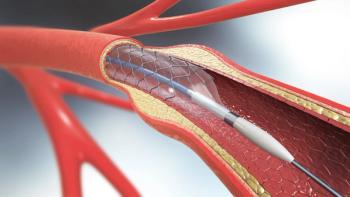
Triple-Negative Breast Cancer May Be Less Aggressive in Patients With SOX9-AS1 Overexpression
This RNA type might act as an onco-suppressor, and higher levels may indicate better prognosis.
Patients with triple-negative breast cancer (TNBC) and BRCA subtypes may have better clinical outcomes if they have an overexpression of SOX9-AS1, according to the authors of a study published in Science Reports. These results suggest that the long non-coding RNA (lncRNA) could be used as a prognostic biomarker for TNBC and basal-like BRCA subtypes.
“SOX9-AS1 is a master regulator of a plethora of genes involved in metabolic reprogramming, cell migration and invasion in patient samples and cell models,” wrote study authors. “We suggest that SOX9-AS1 could act as an onco-suppressor, since its elevated expression levels can result in a better clinical outcome for basal-like and TNBC.”
Patients with TNBC and basal-like BRCA and SOX9-AS1 overexpression experienced improved overall survival (OS; [HR = 0.41, 95% CI (0.18–0.93); log-rank P = 0.028]), increased disease-free survival (DFS; [HR = 0.55, 95% CI (0.4–0.76); Log-rank test, p value = 0.00021]), and disease-specific survival compared to those with low expression.
There are 4 subtypes of BRCA, which include luminal A, luminal B, HER2-enriched, and basal-like. While as many as 80% of basal-like tumors are TNBC, TNBC remains a heterogenous disease that has few molecular targets—thus, treatment options can be varied and nonspecific to the tumor type.
Investigators hypothesize that lncRNAs can be used as a possible prognostic biomarker in TNBC. LncRNAs are transcripts that do not code for proteins and assist in regulating gene expression in cancer cells. During previous studies evaluating the expression of lncRNAs, investigators discovered SOX9-AS1, a deregulated lncRNA that was overexpressed in basal-like tumors. However, there needs to be more research on its role and mechanisms.
In this study, investigators aimed to identify the prognostic value of SOX9-AS1 expression in basal-like and TNBC subtypes. They found that SOX9-AS1 expression was generally reduced in cancer tissues compared to normal tissues, although some tumor types (in the nervous system, connective tissues) had higher SOX9-AS1 expression than normal tissues. Ultimately, this lncRNA was expressed across cell types, but it did not have the same mechanisms.
“The biological role of lncRNAs is precise and closely related to spatial expression patterns between tissue types, and their dysfunction in cancer often influences disease development and progression,” study authors wrote.
Patients aged younger than 50 years also had more SOX9-AS1 expression than patients older than age 50. Moreover, patients with basal-like subtype may be more likely to have SOX9-AS1 overexpression compared to patients with receptor-positive BRCA subtypes.
The lncRNA also had a negative regulatory impact on lipid levels in TNBC, which may align with positive clinical outcomes because changes in fatty acid metabolism have been linked to cancer cell growth.
During the study, the investigative team also assessed the effects of silencing SOX9-AS1 IncRNA. They observed that silencing the genes changed their expression and may be linked to increased disease progression.
“Taken together, our results suggest that the loss of expression of SOX9-AS1 in TNBC cells promotes a more aggressive phenotype,” authors conclude.
REFERENCE
Cisneros-Villanueva M, Fonseca- Montaño MA, Ríos-Romero M, et al. LncRNA SOX9-AS1 triggers a transcriptional program involved in lipid metabolic reprogramming, cell migration and invasion in triple-negative breast cancer. Sci Rep 14, 1483 (2024). doi:10.1038/s41598-024-51947-2
Newsletter
Stay informed on drug updates, treatment guidelines, and pharmacy practice trends—subscribe to Pharmacy Times for weekly clinical insights.






































































































































































































